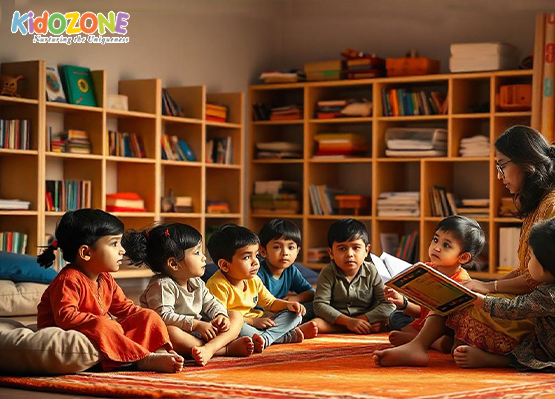The Difference Between Preschool and Kindergarten Understanding Early Childhood Education
Early childhood education is a critical phase in a child’s development. Parents often find themselves navigating the terms "preschool" and "kindergarten," both of which play vital roles in a child's educational journey. While these terms are sometimes used interchangeably, they refer to different stages of early childhood education.
What is Preschool?
Preschool, often referred to as nursery school or pre-kindergarten, is an educational setting designed for children typically aged 2 to 5 years. The primary aim of preschool is to prepare children for formal schooling while promoting social, emotional, and cognitive development. Here are some key characteristics of preschool:
Age Range
Preschool programs usually cater to children from 2 to 5 years old. Some programs may accept younger children.
Curriculum and Focus
The curriculum in preschool is generally play-based, emphasizing exploration and discovery. Activities are designed to foster creativity, motor skills, language development, and social interactions. Themes often include nature, animals, colors, shapes, and basic math concepts, but the approach is informal and flexible.
Social Development
One of the significant benefits of preschool is the opportunity for socialization. Children learn to interact with peers, share, take turns, and develop basic conflict-resolution skills. These social interactions are crucial for emotional development and help children learn to navigate relationships outside the home.
Structure and Environment
Preschools often provide a structured environment but allow for plenty of unstructured playtime. Activities may include arts and crafts, music, storytelling, and outdoor play. Class sizes tend to be smaller, allowing for more individualized attention from teachers.
Teacher Qualifications
While preschool teachers often hold degrees in early childhood education, requirements can vary significantly. Some preschools prioritize a nurturing environment, focusing more on caregivers' experience than formal qualifications.
What is Kindergarten?
Kindergarten is typically the first formal year of schooling for children, usually starting at age 5. It serves as a bridge between preschool and elementary school, emphasizing both social and academic skills. Here are some key characteristics of kindergarten:
Age Range
Kindergarten generally caters to children aged 3 to 4 years. In many areas, children must turn 5 by a certain date (often in the fall) to be eligible to enroll.
Curriculum and Focus
The kindergarten curriculum is more structured and academically focused compared to preschool. Children engage in a variety of subjects, including language arts, math, science, and social studies. The aim is to build foundational skills that prepare them for first grade and beyond. Literacy and numeracy skills are often prioritized, with activities designed to develop reading, writing, and basic arithmetic skills.
Academic Readiness
In kindergarten, children are expected to be more academically ready than in preschool. They typically learn to recognize letters, sounds, and numbers, as well as develop their ability to follow instructions and complete tasks independently.
Social Development
While socialization remains a vital component of kindergarten, the focus is often on collaboration and teamwork. Children learn to work in groups, participate in class discussions, and develop a sense of responsibility. These skills are essential as they transition into more formal educational settings.
Structure and Environment
Kindergarten classrooms are typically more structured than preschool environments. Teachers create a routine that includes specific times for lessons, recess, and activities. Class sizes can vary but may be larger than in preschool, often ranging from 20 to 30 students.
Teacher Qualifications
In many regions, kindergarten teachers are required to hold a bachelor’s degree in early childhood education or a related field, along with state certification. This ensures that teachers are well-equipped to handle both the academic and social needs of young children.



